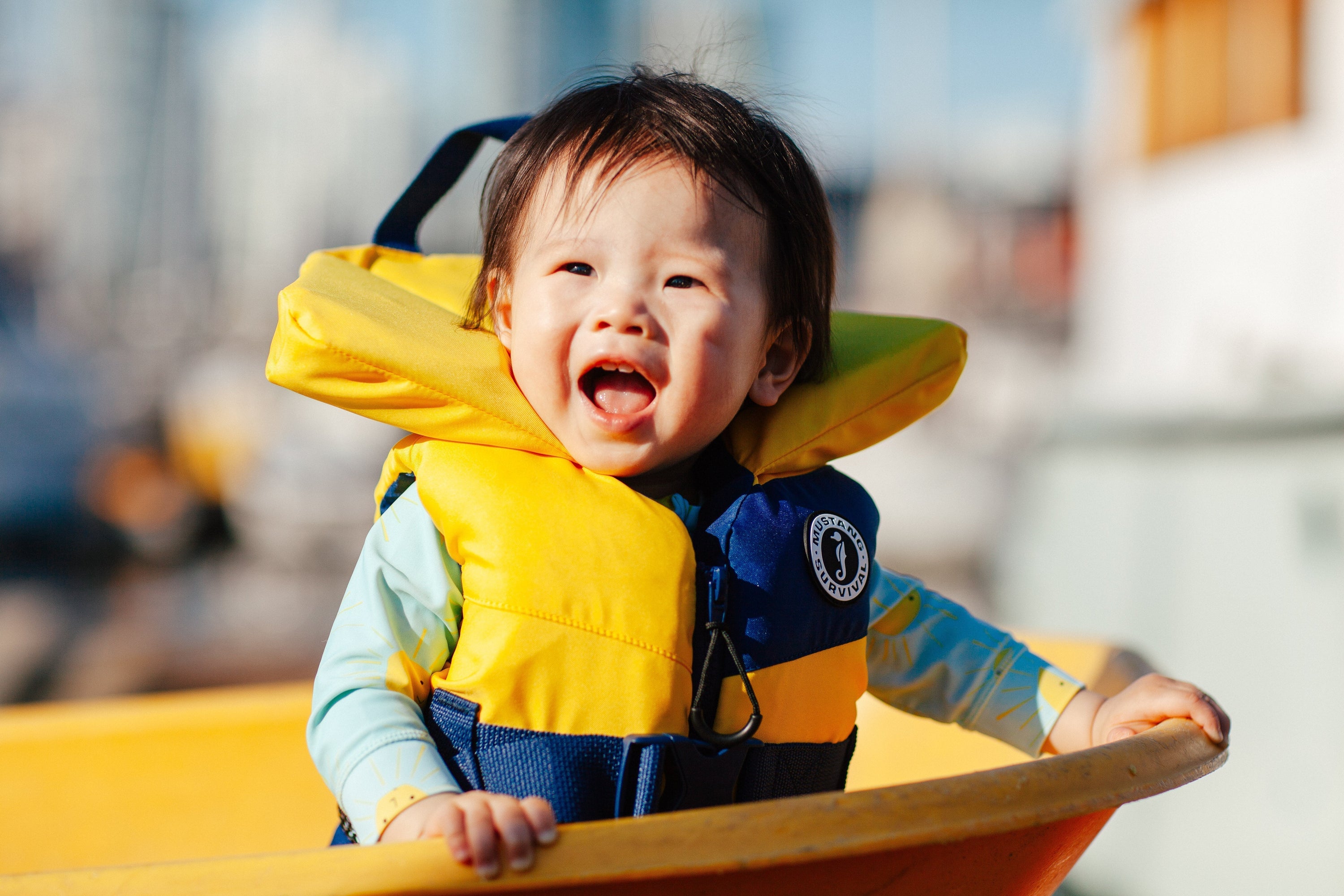
Kids Don’t Float: PFD Loaner Stations Are Keeping Families Safe
Think Back to Your First PFD
If you tagged along on water adventures as a kid, there’s a good chance you were zipped and buckled into a foam vest that fit—maybe, kind of. Maybe it had a snug head pillow nestled up around your ears, or maybe it was a little too loose, a little too tight, or borrowed from an older cousin because there wasn’t a proper kid-sized option around.
Why Properly Fitted Kids’ Life Jackets Matter
Fast forward to today, and more families are heading out on the water to give their kids a taste of life on the ocean. That means the need for properly sized, kid-specific PFDs—and a better understanding of why fit matters—is more important than ever.
Helping kids stay safe and be part of the fun has always been part of the Mustang Survival mission. But designing flotation gear for young bodies hasn’t been a simple copy-paste from adult models. Kids are more compact. That changes the game when it comes to flotation.
Where adults have longer limbs and varied weight distribution, kids are shaped more like a ball. Mustang Survival engineers around this unique shape, designing youth PFDs to keep kids floating on their backs with their faces out of the water. And that’s exactly why weight-based sizing matters—because getting the right fit is more than comfort; it’s a matter of safety.
EXPLORE KIDS FLOTATION
Removing Barriers: Making Life Jackets Accessible for Kids
Of course, designing better PFDs is only part of the puzzle. The bigger challenge? Making sure every kid who needs a life vest can actually get one. That’s where the Kids Don’t Float program comes in.

What Is the Kids Don’t Float Program?
For over 40 years, the Royal Canadian Marine Search and Rescue (RCMSAR)—part of the Canadian Coast Guard Auxiliary (CCGA)—has been focused on reducing marine accidents, injuries, and fatalities. One of the most impactful ways they’re doing that? Making life vests available to families who need them.
Inspired by an Alaskan initiative that started in 1996 after a spike in child drownings, RCMSAR introduced Kids Don’t Float kiosks in six B.C. communities in 2002. These PFD loaner stations, which won the Canadian Safe Boating Award for Best Boating Safety Initiative in 2018, have since spread across many regions of the CCGA.
A Shared Mission: Saving Lives on the Water
"When I visited Mustang Survival and saw their building with the powerful message, 'We Save Lives for a Living,' it was clear that our values are deeply aligned," says Shari Affleck, Executive Director of the CCGA. "I knew right then that a great partnership was not only possible but inevitable."
Mustang Survival and the CCGA share a vision: zero preventable water-related incidents. With Mustang’s gear and a shared commitment to water safety, the CCGA is better equipped than ever to promote safer practices, educate families, and keep kids protected.

How Kids Don’t Float Loaner Boards Work
Here’s how the program works:
Through grants, local fundraising, or government support, a Kids Don’t Float board gets set up in a key location—at a marina, beach access, or trailhead near a waterway. The boards are stocked with youth PFDs that families can borrow for free. Maybe a vest didn’t fit right, one was forgotten at home, or a friend tagged along last minute. Whatever the case, the kiosk gives families a kid-safe option—no excuses.
These stations are often built and maintained thanks to local momentum. Municipalities, harbour authorities, residents, and small businesses come together to share costs, build the boards, and rally around water safety.
A Community-Driven Approach to Water Safety
Each season, Mustang Survival and CCGA supply a fresh fleet of PFDs. Sometimes, demand outpaces supply—families hang onto vests after a day on the water. But that’s not seen as a failure. Quite the opposite.
To the teams behind the program, if families are taking the vests home, it means they’re being used. And if they’re being used, they’re keeping kids safe. That’s the whole point. Sometimes the number of PFDs available dwindles because of this, but community board managers often find additional vests to donate to the board throughout the season.
Helping Families Feel Confident Near the Water
Thanks to programs like Kids Don’t Float and the dedicated efforts of RCMSAR and CCGA, more parents can feel confident about introducing their kids to water—and everything it means to #livebeyondland.